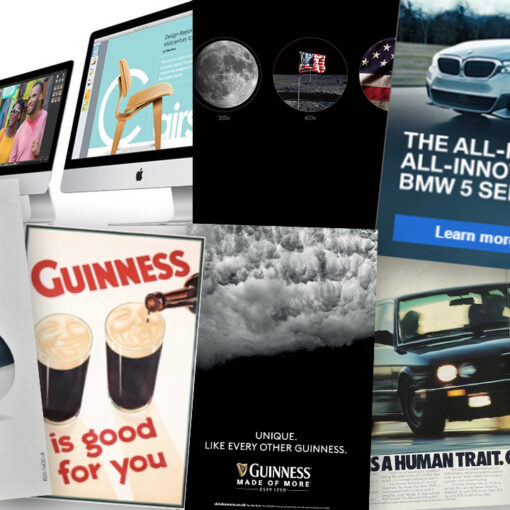It’s anyone’s guess what will happen to the world in 2022, but this is what I think marketers will need to look out for.
As we continue living and working in the era of the ‘new normal’, it’s good practice to look forward and think about what might be important for marketers to consider in 2022.
2022 is likely to continue as 2021 ends. There will be scepticism but also a lot of hope. Hopeful that the things we enjoyed about pre-pandemic life will return to normal.
For marketers, this will signal a significant period of experimentation. If you’re sitting there thinking, ‘I don’t know where to start’. These are the four big things to be aware of in 2022.
The move into the Metaverse.
Meta and the Metaverse are the latest buzzwords in the world of marketing and social media. Many people still don’t understand what a Metaverse is and what that means for them.
The quick and easy explanation is that it is a virtual-reality space in which users can interact with other users and the digital environment around them.
The truth is that we don’t yet fully understand how the Metaverse will integrate into our lives. Some of the practical applications might include gaming, shopping, meetings and socialising.
Tech companies in Silicon Valley like Meta (Facebook), Alphabet and Microsoft are all investing heavily in the Metaverse. Many brands are already starting to think about how they can serve their customers in this new digital landscape, such as buying up digital real estate and creating NFTs which can be traded in the Metaverse later.
Marketers will need to start thinking about how and where they should position their brand within the Metaverse and what percentage of the marketing budget this will control.

Data privacy is going even further.
GDPR was just the beginning of increased privacy protection for consumers. It played an important role in helping to protect consumers, giving them more of a say about how their data is being used.
We’ve seen in recent iPhone updates, privacy for consumers is now top of the agenda. You may remember previous updates where users were being asked to opt-in to allow an app to track a user once they’d finished using that app.
For marketers, tracking user behaviours across the web is useful for delivering more relevant ads and helps to track conversions more accurately. But the lack of transparency and openness was very clearly not a good thing. High-profile cases featuring Uber and Facebook didn’t exactly help.
Apple’s latest software update brings extended data privacy options, which, for the consumer is a big win. Those updates include being able to stop data tracking within emails. Increased privacy when browsing on the web and the ability to create an unlimited number of disposable email addresses to mask personal email addresses.
Marketers have become used to using data from consumers for personalised browsing and shopping experiences online. These updates make that so much more difficult. Marketers will need to rethink their marketing strategies and look at new ways of creating personalised experiences for consumers.

Growth in face-to-face experiences.
The Covid-19 pandemic forced many brands to adopt or accelerate their digital-first strategies; for some, this meant closing physical spaces or reducing capacity. In certain sectors this makes sense, and a U-turn seems unlikely.
But not all sectors are fairing so well. Particularly where the operational side of the business is disconnected from the marketing. Don’t forget, where (Place) and how (Physical Evidence) are two of the Seven P’s of Marketing.
While some brands are retreating into the digital space, others like Gymshark are doubling down on trying to create meaningful IRL experiences with their customers.
I think many of us are trying to predict how customers will want to interact with brands post-covid. Customers may opt for a more blended relationship with brands.

The rise and rise of NFTs
Love them, or hate them, everyone is talking about NFTs. NFTs, also known as ‘Non-fungible tokens’ are on everyone’s lips right now. They are one-of-a-kind digital ‘objects’ that can be owned and traded on the blockchain.
Currently, the most popular type of NFT is digital art. Beeple, who is one of the most well-known digital artists, is said to be worth $50 million, largely down to his sales of NFTs. This bizarre video of Elon Musk or ‘GIGACHAD’ is currently listed for $150,000. With NFTs reaching such high valuations, they’re certainly not to be scoffed at.
It is important to know that NFTs are not just a jpeg or a digital image. It’s something that is held and verified publicly on the Blockchain. So its uses are much broader than you think. Restauranteurs are looking to NFTs as a way to give consumers the chance to own a piece of a restaurant and receive a physical reward as a result. Check out Gary Vee’s Flyfish Club.
Using NFTs as ownership of a restaurant might sound a bit out there, but it’s not a new idea at all. BrewDog’s ‘Equity for Punks’ has raised over £30 million for the business through the traditional purchase of equity. Despite giving Punks little more than a birthday beer and a discount at the bar, over 200,000 people have become investors.
Although this one may be somewhat further into the future, brands need to start thinking about how they could make the most of NFTs.
Still not sure how NFTs can be used, Identity Review has a great piece about the 10 future use cases of NFTs that you should definitely that a look at.





